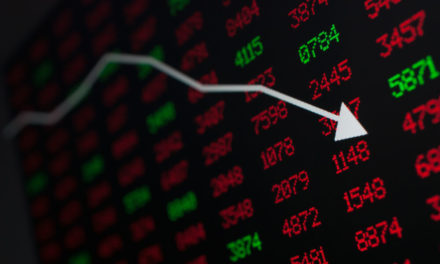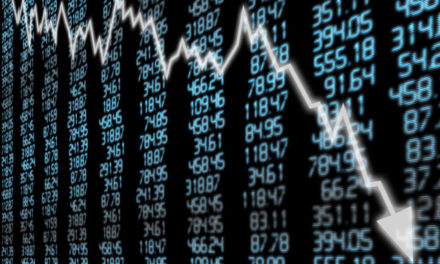Look, our country is the hottest in the world. We have the hottest economy in the world. We have… the best employment numbers. Right now we have almost 160 million people working in the United States, and we’ve never even been close to that…
— Donald J. Trump
BALTIMORE — Let’s begin by noting that, by the popular price-to-sales measure, U.S. stocks are at an all-time high.
The typical level is close to 1. But now, it’s more than twice that high. And companies such as computer giant Nvidia are selling for as much as 15 times sales. We also note that the last time stocks were anywhere near this high was back in 2000.
What happened after 2000? In terms of old, gold-backed dollars, stocks lost big time… and now are worth only half their value of 20 years ago.
We mention that as a kind of financial fanfare for our question from Thursday. As we wrote then:
In real money, they (investors in the ’70s) lost 92% of their stock market wealth. Prices held steady in nominal, new dollars. But in old-dollar terms, they collapsed.
So what do you think? What would you tell the young man just starting out today? Buy stocks? Or buy gold?
In 1970, a young man was 13 times better off betting on gold than on stocks over the following 10 years. We wondered whether the ’20s might give us a replay…
New Dollar
Back then, the feds were inflating away the bills from Lyndon B. Johnson’s guns-and-butter disasters. Consumer price inflation had been low for two decades. In the early ’60s, it was less than 1.5%… much like it is, officially, today.
But then, it crept up, to 5.8% in 1970. And the rest of the world — which held billions of dollars — began to get nervous. And rightly so.
Rather than honor its commitment to redeem U.S. dollars at $35 an ounce of gold, the Nixon administration simply “closed the gold window” and created a new currency… a dollar that wasn’t connected to anything. The feds could now print as many as they wanted.
Shrewd investors anticipated the move, but not by much. Gold was already up to $40 an ounce when the announcement was made on August 15, 1971. Then, the dollar continued to sink until, by the end of 1979, gold was changing hands at $512.
Money Guardians
The premise of the U.S. Treasury, and the economists guiding it — including Nobel Prize winner Milton Friedman — was that the new dollar would be every bit as good as the old one… and that its guardians at the Treasury would be careful not to print too many.
But that premise was false. In 1973, the Arabs proved it, raising the price of oil 300% just to keep up with the depreciating dollar.
The feds were spending too much money; the deficits had to be borrowed. This “crowded out” private borrowing and slowed the economy. The combination of rising consumer prices and economic stagnation was cleverly stitched together as the monster “stagflation.”
By 1974, that monster was breathing fire. Consumer prices were rising at an 11% rate. The feds, near panic, built defenses. They created the Congressional Budget Office (CBO) to try to bring their expenses and revenues closer together.
Perhaps the CBO helped. Or maybe it didn’t. Either way… the monster ran wild. U.S. public debt rose from $371 billion in 1970 to $908 billion in 1980. And by 1980, the inflation rate was hitting 14%.
Today’s inflation rate, by contrast, is less than 2%. Officially. But wait…
Hedonic Inflation
In the 1990s, the feds changed the way they calculate the inflation numbers. If they thought the quality of a product had increased, they reasoned that buyers got more for their money. So they pretended that consumers got a lower price, too.
If a new computer was 10 times as fast as an old one, for example, they cut the price 90% — even though you had to pay just as much for the new one as for the old one.
As you can imagine, these “hedonic” sleights of hand substantially cut the “inflation rate.”
But John Williams, bless his heart, continues to calculate inflation using the same formula used in 1980. Guess what inflation rate he gets for last year? Ten percent.
In other words, using the same yardstick, inflation is already higher than it was in 1970. And the price of gold, also a good measure of real price inflation, rose more than 8% last year too.
The ’70s ended with no crash in the stock market. But, after inflation, a stockholder left the decade with only about 7% as much real wealth as he had when he entered it.
Mightn’t the ’20s turn out to be similar?
False Premise
We hardly need to mention that “we never know what is coming.” We’ve proven it over and over in our own guesses and hunches. Fortunately, the way to make money is not by predicting the future, but by spotting the claptrap.
“Find the trend whose premise is false,” advised billionaire investor George Soros, “and bet against it.”
In broad terms, the false premise of the ’70s was that the new dollar was as good as the old one. You could have multiplied your money 13 times, simply by betting against the new dollar. All you had to do was to buy gold and sit tight.
And what about now? The leading premise of the ’20s is probably that this economy is just as good as ever. Investors seem to think so. The press says so. And Donald Trump says it’s better than ever.
Is it true? Or false?
If true, even Nvidia investors might come out ahead. If false, the 2020s will prove to be at least as painful as the ’70s. Probably much worse.
Stay tuned…
Regards,
Bill
• This article was originally published by Bonner & Partners. You can learn more about Bill and Bill Bonner’s Diary right here.




